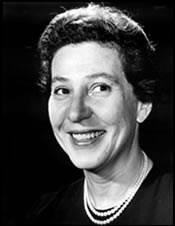
|
Compositions *** |
Sonatina for Oboe and Piano
year
1942
duration
7½ minutes
première
September 7, 1942, Teatro del Pueblo, Buenos Aires, Argentina; Esther Castro, oboe and Rodrigo Storani, piano
recording
Available on demo CD
movements
Allegro moderato
Lento sostenuto
Allegretto
program notes
Although 1939 was a busy year, Fine turned her attention again to the oboe and wrote Sonatina for Oboe and Piano for her oboist friend, Joseph Marx. The composition won a prize in a contest sponsored by the Music Guild of Philadelphia. The Sonatina is in three movements (fast, slow, fast). The first movement is in a symmetrical sonata design (first theme, second theme, development, second theme, first theme); in the lyrical second movement both the oboe and the piano exchange melodies and accompanimental roles; and the lively third movement features baroquelike figuration shared between both instruments. Movement one’s beginning F major theme sounds like a Scarlatti sonatina, and one would expect a rather simple composition; however, the second theme exhibits Fine’s penchant for doing the unexpected. The tonal center is D Flat, meters change, and the piano adds energetic figures above and below the oboe’s melody. As the formal plan shows, more attention is given to the second theme. It is transposed to G Flat, fragmented in the short development, and is heard in F major at the beginning of the recapitulation. When the first themes returns near the end, it is decorated with contrapuntal lines.
The second movement is a ternary song form. In the beginning the oboe has C Phrygian melody, which the piano accompanies in a dissonant C major. The tonality changed for the B section, and, instead of the previous bimodality, the interest is in the contrapuntal lines that the piano adds to the oboe melody.
The opening solo oboe material of the last movement suggests a fughetta or invention, but Fine created a binary shape of ABAB through tonal relations in F minor, G major, C minor, and G major, which eventually returns to the beginning F tonality. This is the most tonal of her music and is a striking contrast to the modernistic Solo for Oboe composed ten years earlier; however, Fine demonstrated that she could take simple tonal materials and manipulate them so that the listener never knows what to expect. The last A section has the beginning motif in C minor that when combined with the descending oboe line creates the dissonant interest found in her earlier music.–Heidi Von Gunden, The Music of Vivian Fine, Scarecrow Press, 1999
audio files